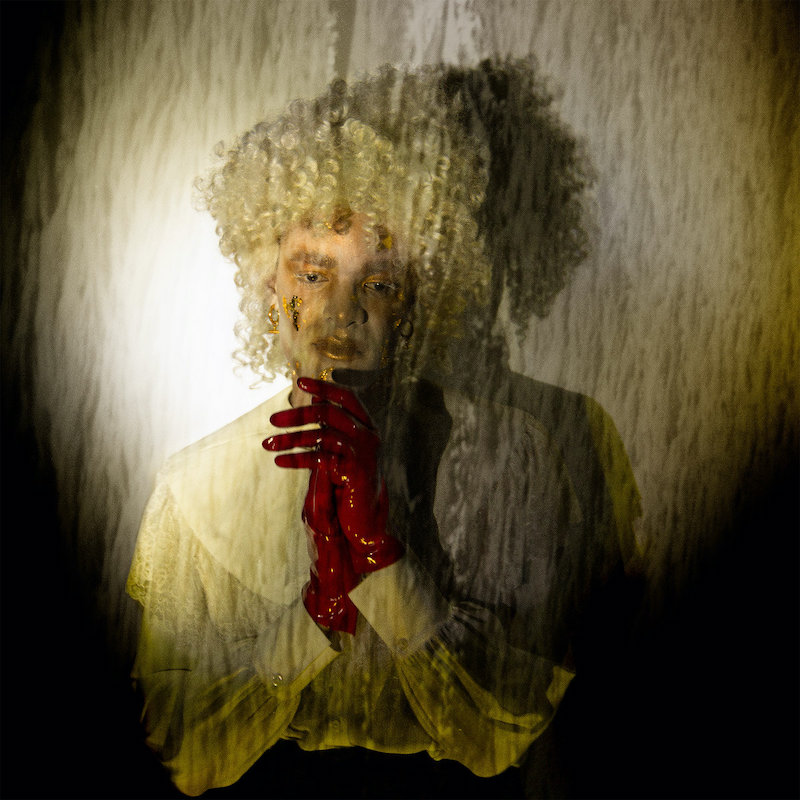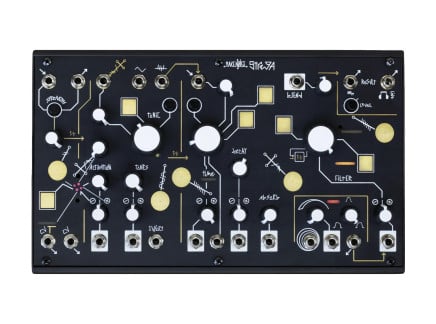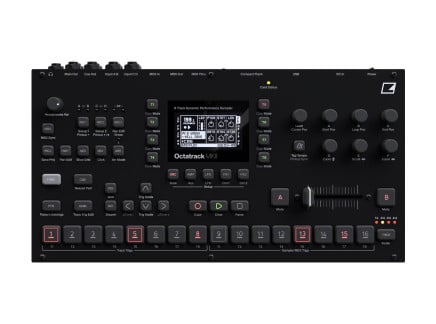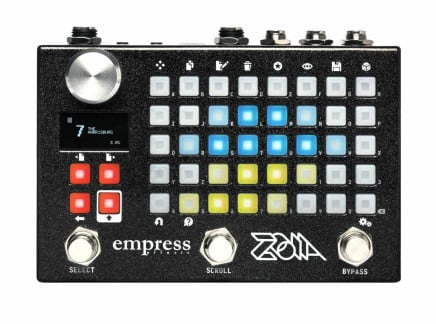Finding the right set of tools to translate your music into a solo live performance can be quite tricky, especially for musicians who are used to building recordings track-by-track in a DAW. Translating layers and layers of orchestration into something you can achieve by yourself can be a challenge, and each musician approaches this type of translation in a slightly different way, finding their ideal personal compromise between representing the sound of their recordings while still bringing energy and spontaneity to their live performances.
Our friend Pascal Stevenson (Moaning, Girlpool) recently stopped by our shop to show us how she's tackling this deeply personal process. Playing reimagined songs from her solo project Fashion Club, we had the opportunity to experience how her brooding, hypnotic art rock could unfold into the context of solo live performance. Check out the video above for a series of deep, evocative sounds, and read on for more info about Fashion Club and her live performance rig.
Fashion Club's Scrutiny and Live Performance Rig
 Cover art for Fashion Club's Scrutiny
Cover art for Fashion Club's Scrutiny
Out now on Felte, Fashion Club's first album Scrutiny is a deep, brooding exploration of morality, responsibility and self-deception. Instantly evoking art-rock icons like Kate Bush, Brian Eno, Bowie, and Wire, the album features Pascal's unmistakeable voice shrouded in layers of synths, heavily chorused guitar, and hyper-compressed drums. The sound clearly refers back to the early intersections of art rock and dream pop; the vocals feel like an obvious focal point, though they shift between front-and-center presentation and something much more shrouded and murky. Listening to her distinct voice through layers of processed guitar and synths only serves to envelop you further in her classic-yet-peculiar sound world, with songs surrounding you more and more on each repeat listen. And trust me...you'll want to listen on repeat.
Of course, as stated above, this type of music can be difficult to pull off by oneself—on one hand, you can't play a whole band's worth of instruments as a single person, and on the other hand, pressing "play" on a laptop full of backing tracks usually isn't the most gratifying experience for a performer or an audience. So, how do you translate something created in a studio into something that you can perform live by yourself? Some artists would simply take their Ableton sessions, a controller, a microphone, and perhaps a single instrument to play live...but Pascal takes a different approach.
In building her live performance setup, Pascal looked for the right combination of straight playback and performative control, wanting to remain an active part of live performances. Perhaps one of the most interesting conceptual extensions of this approach is that Pascal isn't necessarily trying to recreate the exact sound of her songs as they appear on the record—instead, she's re-interpreting her own music, presenting the music in a more ambient, textural, exploratory fashion.
You'll notice there's no computer in her setup: instead, she's taking an all-hardware approach that combines a sampler, semi-modular gear, guitar, effect pedals, and live vocals. The central hub for the whole setup is an Elektron Octatrack sampler. Pascal uses the Octatrack for playback—both for stems and full tracks—but also uses it as a central mixer/processor for other live sound sources and instruments. Perhaps the most interesting implication of this approach is that the Octatrack can then easily become a way of "melding everything into one," acting as a mixer, processor, and as a means of "scene" management, making it easy to transition from one track to the next.
Vocals are processed directly through the OBNE MAW. Auxiliary instruments include the Make Noise Strega, which adds layers of crackling, washy, sputtery ambience to her performance. The Strega sits alongside an Empress ZOIA, which performs a lot of duties in the set, from control to processing. Perhaps most interestingly, Pascal uses the ZOIA and a standalone MIDI-CV converter to send note information to Strega, using ZOIA like a highly compact keyboard.
Pascal also plays guitar in this live iteration of Fashion Club, though the guitar almost never comes through completely dry: instead, it provides shoegaze-like washes of ambience, offering a bed for her vocals and Octatrack backing tracks. The sound of the guitar is processed through a variety of pedals. The OBNE Dark Star reverb turns the dry sound of the guitar into a fully wet, floating ambience. Hologram's Infinite Jets performs a similar function, completely transforming the guitar's sound into something more textural; however, where the Dark Star turns the guitar into lush washes of sound, Infinite Jets turns it into something more jarring and glitchy, making for easy textural differentiation between songs. A Death by Audio Reverberation Machine intensifies this approach, turning the guitar into a howling wail of distorted reverb.
The signal then passes through to a Chase Bliss Blooper and Habit configured in series. Together, these turn the incoming textures into a looping ambient bed that builds up and glitches out over time. The Blooper is responsible mostly for the gradual building up of layers, whereas the Habit is often used to scramble the Blooper's output, using the Scan control to randomly access audio from the past. Given similarities in melody and harmony between different parts of Pascal's songs, this works quite well—material from the past can often sound quite harmonious and interesting when combined with the present, and randomly interjected layers often turn into happy coincidences and surprising harmonies. The ZOIA follows the remainder of the pedalboard, offering amp simulation, granular processing, and more.
Overall, this is a quite inventive setup...but the thing that's most interesting to me is Pascal's willingness to let the realities of live performance guide her toward unique interpretations of her songs. Songs and musical ideas are recognizable, but recontextualized...making for a quite interesting experience as a listener. If you're familiar with her music and listen to a live performance, you'll catch on to the familiar tunes, stretched out and weathered by her evocative choice of setup. If you hear the live performance first, you'll be delighted upon hearing the album: what once were floating, murky textures will take stronger, clearer form. Either way, it's an interesting way of exploring the listener's memory—and either way, it sounds excellent.
Fashion Club's Scrutiny is available now...and we strongly recommend giving it a listen.















